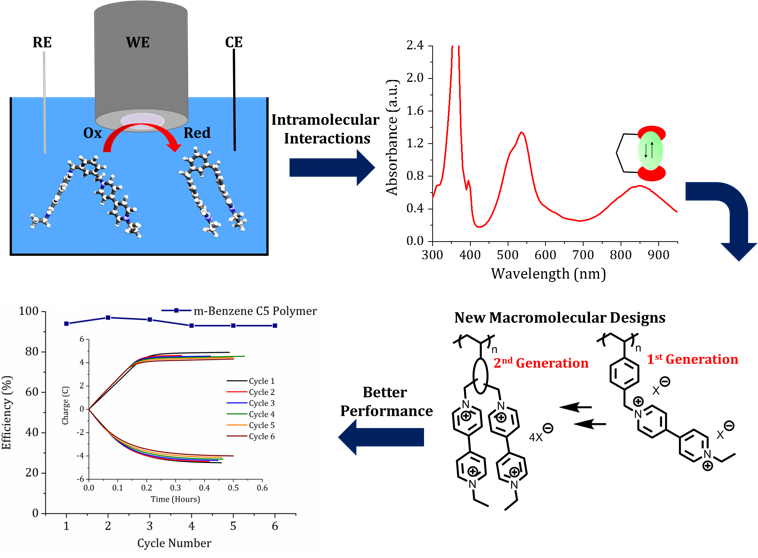
Scientific Achievement
Fundamental inter-valence interactions are used as starting point for improving the electrochemical properties of redox active polymers and explore structure/activity relationships.
Significance and Impact
The modulation of RAP inter-pendant interactions decisively impacts charge transfer. While polymers with optimized macroscopic reversibility were obtained, the microscopic trends describing small molecule electrochemistry did not hold for polymers, showing anti-Marcus effects that require further investigation.
Research Details
- The information garnered from the electrochemical and spectroscopic measurements offer a diverse experimental approach to reliably study the RAPs charge transfer kinetics and charge propagation in solution and as a film.
- Tailored inter-pendant interactions help us probe concepts aimed at facilitating the size-scaling of materials for size-exclusion flow batteries.
- Correlating electronic structure and rate effects on RAPs with well-controlled architectures lead to unprecedented understanding of how electrochemical properties in monomers translate to their polymer equivalents.

